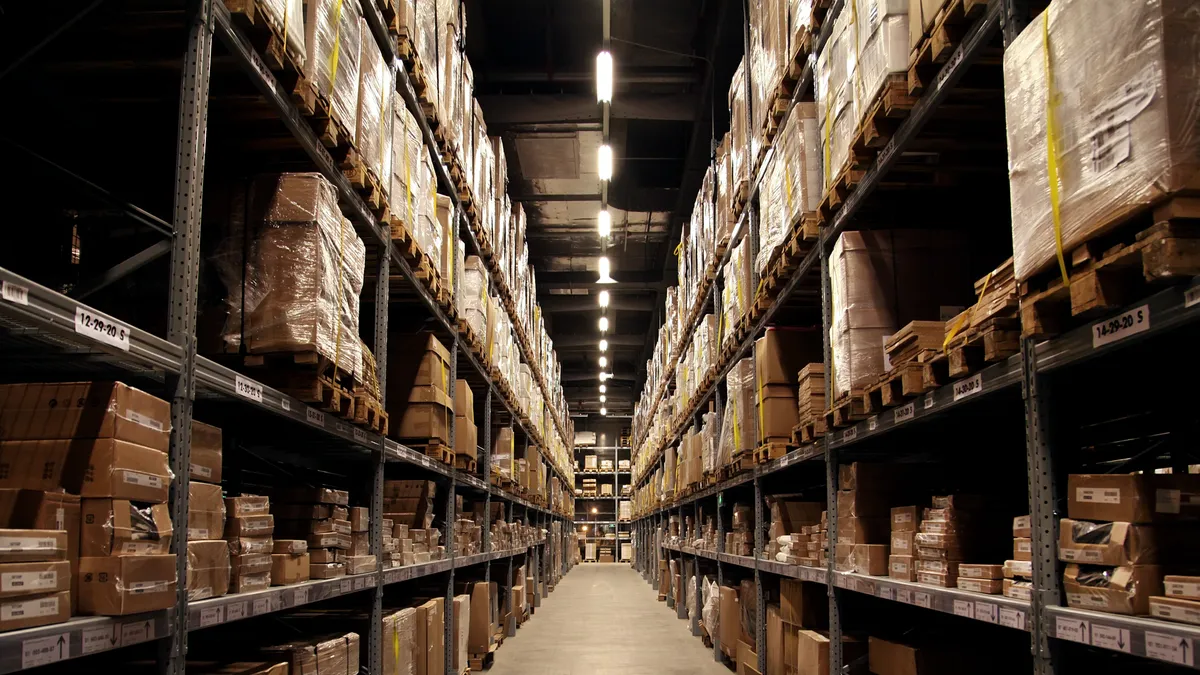Dive Brief:
- The logistics real estate sector could be among the best positioned to handle inventory supply and demand disruptions from the COVID-19 outbreak due to standard long-term occupancy contracts and a potential shift to more regional supply chains in the future, according to a report from Prologis released in March.
- To date, a healthy economy led to "longer leases that buffer cash flows from short-term disruptions," according to the report. While short-term investment in warehousing might slow due to the economic impact from the outbreak, the sector has the insulation needed to recover.
- Supply chain managers typically prefer to keep inventory levels low, but shortages of consumer goods such as food and cleaning supplies could lead supply chain managers to rethink optimal inventory levels and storage locations, the report found. As a result, there could be increased demand for space to handle an eventual surge in goods and build up resiliency against future shocks.
Dive Insight:
While the disruption to global supply chains was arguably not as severe as the impact of COVID-19, shippers filled warehouse space with inventory stockpiles to get ahead of China tariffs or Brexit-related trade slowdowns, the report found.
Prologis predicts the sector could see a similar trend once supply chains and consumer demand normalize and backlogged inventory begins to rush forward.
In addition to potentially resulting in warehouses carrying higher inventory levels as an industry standard, Prologis anticipates e-commerce, which grew by 16.7% globally in 2019, to increase. The surge would be driven by more consumers choosing to shop online as a result of social distancing measures or store closures.
"Given its value proposition, especially in the hardest-hit markets, e-commerce may rise in even greater importance in the basic functioning of everyday life," the report said.
This could lead shippers to reconsider their logistics footprint, preferring a regionalized approach that can offer greater flexibility, proximity to key urban centers and better insulate supply chains from market disruptions.
Existing Industry 4.0 technologies such as robotics and 3D printing have begun to spur this trend, increasing factory productivity, and "increasingly emphasizing near-adjacent locations (e.g., Mexico, CEE) alongside reshoring," the report found, "this broadening of manufacturers creates second-order demand through both suppliers and networks."
In the short-term, a potentially sharp economic downturn this year could cause supply chains to rethink investing in logistics real estate. However with interest rates at historic lows, Prologis finds the sector in a good position to spring back.
Dollar General, for example, is pushing ahead with a plan to double its fresh distribution assets by the end of the year, serving 12,000 stores (up from 6,000). The company's CEO said the move would help improve margins in 2020 and in the future.
Consumer demand for fresh and online grocery is set to increase in the coming years. In 2019, CBRE projected this trend would translate into industry demand for 100 million square feet of additional cold storage warehousing space over the next five years.















